Cyber-feminism and the Islamic Feminist Movement in Digital Media
Cyber-feminism was first initiated by Donna Haraway (1985), highlighting the issue of technology and the internet that women use to express and convey their aspirations. Fourth-wave feminism, which coincided with digital developments, helped to create a new space for feminists to speak out on various issues. According to the Dictionary of Media Studies (2006:58), cyber-feminism in particular examines new technologies and their impact on women’s issues. Cyber-feminism shows that the internet can empower marginalized groups (Gajjala, 1999:121). Hence, cyber-feminism is not just a theoretical study but a practical movement that offers ideas to eliminate discrimination against women.
Furthermore, digital media is an important aspect of this practical movement (Kanai & Dobson, 2016). Women tend to voice against gender inequality they have endured in the non-virtual space through online interaction. The interaction formed in digital media provides a new medium for women to free themselves from domination and subordination (Alatas & Sutanto, 2019: 167). Sadie Plant et al. in Subono (2001:18) explained that women who use the internet could exercise the rights of justice and set them free from oppression. Therefore, cyber-feminism gives a new hope for feminists who actively use digital media to fight gender constructions and domination while empowering themselves and others.
Islamic Feminism in Indonesia
In Indonesia, examining the discourse of feminism is not a simple task since people fail to view it uniformly. This concept often creates polemics because several groups think feminism is incompatible with the country’s norms and culture. Conservative Muslims view feminism as a symbol of Western ideology which is culturally, religiously, and nationally conflicting to women (Anwar, 2021: 7). The concept of feminism is seen as a representation of colonialism because it ignores historical, geographical, and cultural aspects of the country (Mohanty, 1991:510). However, some support feminism and use feminism as the basis for speak out on women’s issues, for example, Muslim feminists. According to Parvanova (2012:23), Muslim feminists have several objectives in Indonesia. First, fostering gender sensitivity, raising awareness of gender bias, and improving gender equality. Second, countering Islamic fundamentalist movements and traditional practices that are still practiced. Third, combining Islamic teachings and human rights values. Doorn Harder (2006:27) explains that the terms ‘feminism’ and ‘activism’ describe activities aimed at achieving gender equality and using Islamic discourse to empower oppressed women and men.
Indonesian feminism is inclusive of any religion, gender, and community because it has a mission to voice rights and freedoms for both women and men (Doorn-Harder, 2006:37). The true essence of feminism itself is to abolish subordination and restore humanity. According to Qibtiyah (2020), Muslim feminism appears in the discourse of the women’s movement as an effort to ensure that women do not experience discrimination from the understanding and practice of religion which they believe to be the truth. Anwar (2021: 14) refers Islamic feminism in Indonesia as the social and intellectual movement of feminists who use Islamic teachings as a discursive reference to promote gender equality and eliminate oppression. In Indonesia, progressive Islamic women’s organizations frequently associated with feminism are Fatayat Nahdlatul Ulama and Nasyiatul’ Aisyiyah. Both organizations agree women are allowed to occupy leadership positions. Fatayat and Nasyiatul’ Aisyiyah have also promoted gender justice. These two organizations believe that women should be aware of their rights. Along with the development of technology, the Islamic feminist movement in Indonesia has expanded into cyberspace, providing fresh perspectives on women and Islam, and actively campaigning for gender equality.
Islamic Feminist Movement in Digital Media
Digital feminist activism emerged in response to the prevalence of gender-based violence and strengthened religious conservatism (Parahita, 2019:104). According to Parahita (2019: 104), it grows from young women and networks of Islamic movements in Indonesia. They created accounts on social media such as Facebook, Instagram, Twitter, and YouTube. These sites serve as a forum for forming movements, sharing personal stories, providing online discussion, holding offline discussions, responding to criticism of views, and conducting and publishing research (Parahita, 2019: 105). Muslimahfeminis, Mubadalah.id, and Ngaji Keadilan Gender Islam (KGI) are the examples of Indonesian feminist movement in cyberspace. Muslimahfeminis is active both on Instagram and Twitter and strongly opposes ideas that marginalize women under the pretext of religion. Then, Mubadalah.id is an Islamic media that always promotes mutuality in a relationship between women and men. Women and men must respect each other so there will be no violence between them. Mubadalah.id has its website and accounts on Facebook, Instagram, Twitter, and YouTube and usually addresses Islamic interpretations related to polygamy, child marriage, and domestic roles. Subsequently, Ngaji KGI initiated by Dr Nur Rofiah, Bil Uzm was carried out offline before but currently changed to online through Instagram, Facebook, Youtube, and Podcasts. Its mission is in line with Muslimahfeminis and Mubadalah.id that is campaigning for a woman-friendly Islam and warm relationship between women and men. Dr Nur Rofiah, Bil Uzm also has a personal Instagram account and actively promotes women’s rights through it. In addition, Kalis Mardiasih is a prominent feminist Muslim who actively shares her thoughts on women’s vulnerabilities on social media. Besides, several networks such as Swara Rahima and Fahmina Institute also help to advocate for women’s rights through social media. They all raised diverse issues, including their views on feminism and gender justice, sexual violence and domestic violence, polygamy, and child marriage.
In Indonesia, the Islamic feminist movement aims to fight against injustice that commonly uses religion as a crutch. The presence of technology and digital media serves as a means for the movement to re-dialogue discriminatory interpretations. Cyberspace has become a platform for the feminist movement to fight against biased narratives and voice that Islam is a religion of justice. The movement can be regarded as cyber feminists who oppose domination and eliminate discrimination through digital media. In non-virtual space, they may not be as comfortable as in cyberspace. Women can choose their own desired paths and can empower themselves while still devout Muslims. The belief is that people have a price to pay to achieve their goals. In digital media, the Islamic feminist movement indeed encounters rough paths such as criticism, being accused of blasphemy, being seen as violating religious teachings, and so forth. However, the movement has opened people’s eyes to the fact that every woman has rights to live adequately, to feel safe, and to be respected. Also, technology and digital media have become necessary to fight narratives that dishonour women and regard them as second-class human beings. Those digital media movements convey previously taboo issues with the belief that Islam is a religion of justice. It also provides an alternative perspective on women and Islam which seems patriarchal. Moreover, technology and digital media have facilitated Muslim feminists to rise above misleading interpretations and work together to create a more humane community.
References
Alatas, S., & Sutanto, V. (2019). Cyberfeminisme dan pemberdayaan perempuan melalui media baru. Jurnal Komunikasi Pembangunan, 17(2), 165-176. https://doi.org/10.46937/17201926846
Anwar, E. (2021). A genealogy of Islamic Feminism: Pattern and change in Indonesia. Routledge.
Doorn-Harder, P. (2006). Women shaping Islam: Reading the Qur’an in Indonesia. Urbana.
Gajjala, R. (1999). “Third World” perspectives on cyberfeminism. Development in Practice, 9(5), 616–619. http://www.jstor.org/stable/23317590
Kanai, A., & Dobson, A. (2016). Digital media and gender. In N. A. Staples, The Wiley Blackwell Encyclopedia of Gender and Sexuality Studies (1st ed., pp. 1-4). Wiley-Blackwell. DOI: https://doi.org/10.1002/9781118663219.wbegss653.
Mohanty, C. T. (1991). Under Western eyes: Feminist scholarship and colonial discourses,” in Third World Women and the Politics of Feminism, edited by Chandra Talpade Mohanty, Ann Russo, and Lourdes Torres. Indiana University Press.
Parahita, G. (2019). The rise of Indonesian feminist activism on social media. Jurnal Komunikasi Ikatan Sarjana Komunikasi Indonesia, 4(2), 104-115. doi:https://doi.org/10.25008/jkiski.v4i2.331
Parvanova, D. (2012). Islamic feminist activism in Indonesia: Muslim women’s paths to empowerment. Austrian Studies in Social Anthropology. Sondernummer, 1(1), 11-26. https://alumni-ksa.univie.ac.at/wp-content/uploads/text-documents/ASSA/ASSA-SN-2012-01-Art2-Parvanova.pdf
Qibtiyah, A. (2020). Arah gerakan feminis Muslim di Indonesia. UIN Sunan Kalijaga dan Kurnia Kalam Semesta.
Russell, J. (2006). Dictionary of media studies. A & C Black Publishers Ltd.
Subono, N. I. (2001). Perempuan dan teknologi. Jurnal Perempuan, (18), 11.
.

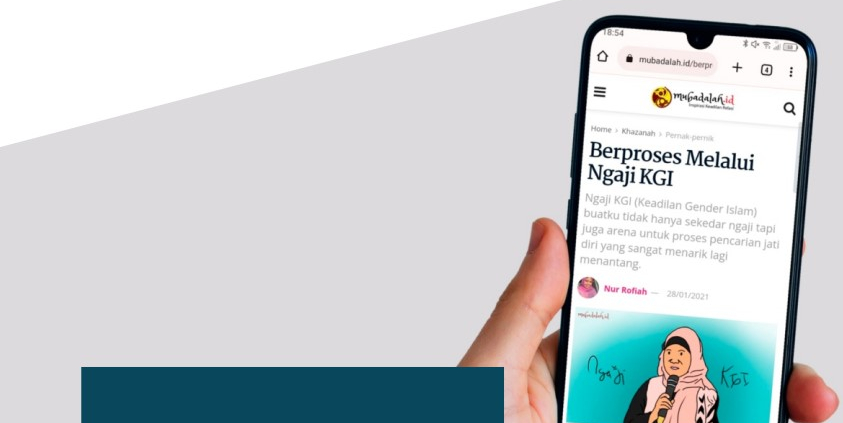

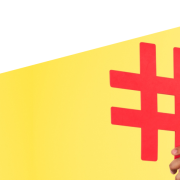
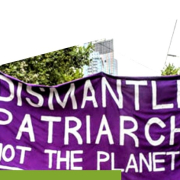

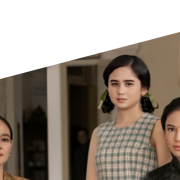



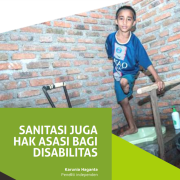
Leave a Reply
Want to join the discussion?Feel free to contribute!